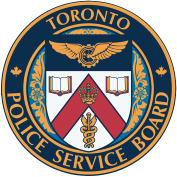
Aboriginal Policing – Statement of Commitment and Guiding Principles
Preamble
The Toronto Police Services Board is committed to respecting and recognizing the unique position that First Nations, Inuit and Métis peoples (“the Aboriginal community”) hold in Toronto as the original peoples of this land.
The Board acknowledges that:
- The Aboriginal community within Toronto is a diverse collective comprised of many Nations;
- The relationship between police and the Aboriginal community has experienced difficulties in the past. The Toronto Police Service and the Toronto Police Services Board are committed to working with the community towards a more equitable, mutually respectful, honest and trusting relationship.
- Members of the Aboriginal community are over-represented in the criminal justice system, as both victims of crime and accused persons.
- The use of principles of restorative justice as well as participation in diversion programs, including Aboriginal diversion programs, for members of the Aboriginal community should be supported to the fullest extent possible.
Guiding Principles
Having regard to the commitment stated in the Preamble, the Toronto Police Services Board adopts the following guiding principles in order to ensure the provision of adequate and effective police services to the members of Toronto’s Aboriginal community:
Representation and Accessibility
- The Board is committed to ensuring that the Service works continuously to build sustainable relationships with members of the Aboriginal community at both the corporate and the divisional levels.
- In the development of the Service’s priorities and the allocation of staff and resources, it is beneficial to recognize the concerns of the Aboriginal community, and, in particular, to acknowledge the increasing youth population in the Aboriginal community.
- An adequately resourced Aboriginal Peacekeeping Unit, that includes dedicated staff, is valuable in meeting the unique policing requirements of the Aboriginal community.
- Where possible, in Divisions with high Aboriginal populations, officers dedicated to working with the Aboriginal community are helpful in the provision of policing services to the community.
- It would be beneficial for the responsibilities of such officers to include, among others: acting as a liaison between the Service and the community, regularly providing information to the community, connecting members of the community to other services, working with child welfare agencies and assisting members of the community through the court system.
- The Board is committed to ensuring that the Service is reflective of the population that it serves because this increases the ability of the Service to meet community needs and provides a foundation for relationships of trust with Toronto’s diverse communities.
- It is important to ensure that recruitment, selection, hiring and promotional practices continue to facilitate greater participation in, and greater access to, employment and promotion opportunities to members of the Aboriginal
community at all levels of the Service.
- It is important to ensure that recruitment, selection, hiring and promotional practices continue to facilitate greater participation in, and greater access to, employment and promotion opportunities to members of the Aboriginal
Training
- The Board is committed to ensuring training programs that address issues of diversity and cultural competency are delivered to all Service members to enhance their ability to provide effective services to Toronto’s diverse communities.
- Cultural competency means the ability to interact skillfully with people of different cultures and requires awareness of one’s own cultural world view, knowledge of different cultural practices and world views, the possession of cross-cultural skills as well as a positive attitude towards cultural differences. Further, there needs to be a base understanding and respect for the lived histories and understanding of policies affecting Aboriginal people historically and currently.
- The provision of relevant and regular training on cultural competencies specific to interacting with members of the Aboriginal community contributes to equitable and inclusive service delivery. Including members of the Aboriginal community in both the design and delivery of such training is extremely valuable.
Accountability: Participation, Consultation and Information Sharing
- The Board is committed to the community consultative process as a key component of community policing and an important mechanism for accountability. Consultation is the vehicle by which the community and the police exchange information specific to the community, identify issues and develop strategies for maintaining and enhancing community safety.
- It is important for the Service to encourage and provide ongoing and regular opportunities for meaningful and inclusive dialogue and consultation between members of the Service and members of the Aboriginal community.
- It is essential that such information-sharing and consultation processes provide for accessibility, accountability and transparency in the decision-making process.
- Efforts should be made to include youth members of the Aboriginal community in the consultation process.
- It would be useful for the Service to analyze information specific to the Aboriginal community, to obtain input on such information from members of the community, to identify trends and issues, and to circulate such information as appropriate.
Appendix
Restorative Justice1
The roots of restorative justice can be found in Aboriginal healing traditions and the nonretaliatory responses to violence endorsed by many faith communities.
It represents a return of the simple wisdom of viewing conflict as an opportunity for a community to learn and grow. It operates on the premise that conflict, even criminal conflict, inflicts harm, and therefore individuals must accept responsibility for repairing that harm. Communities are empowered to choose their response to conflict. Victims, offenders and communities actively participate in devising mutually beneficial solutions, and implementing those solutions. Conflicts are resolved in a way that restores harmony in the community members' relationships, and allows people to continue to live together in a safer, healthy environment.
1 The Centre for Restorative Justice, Simon Fraser University, http://www.sfu.ca/crj/
vulnerable populations, anti-racism, inclusion, interaction with public